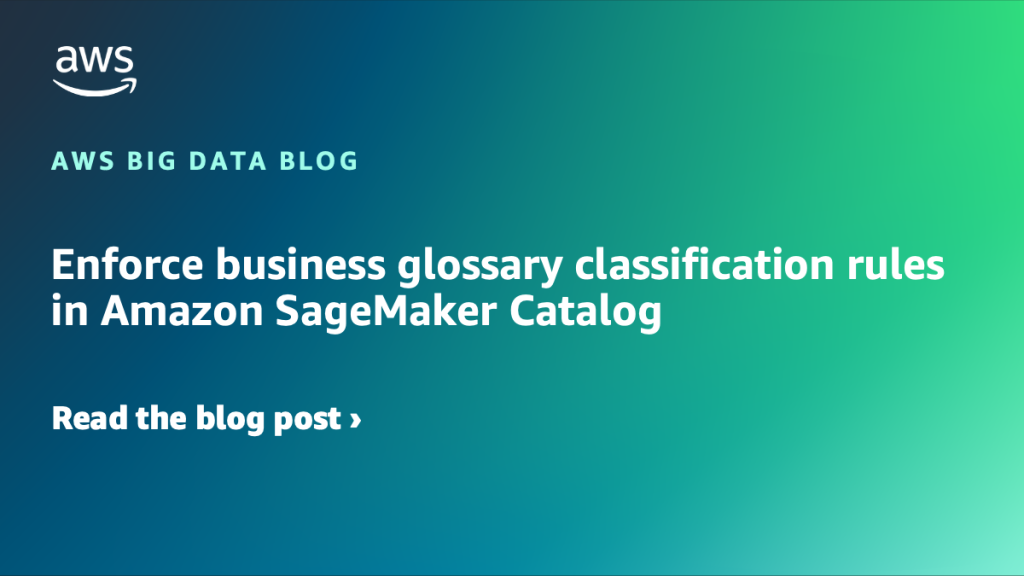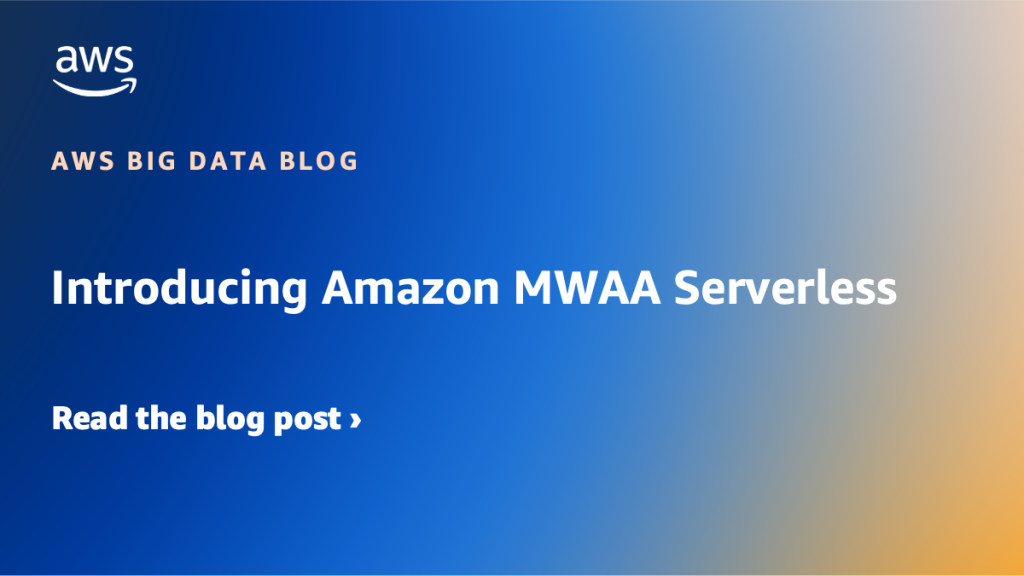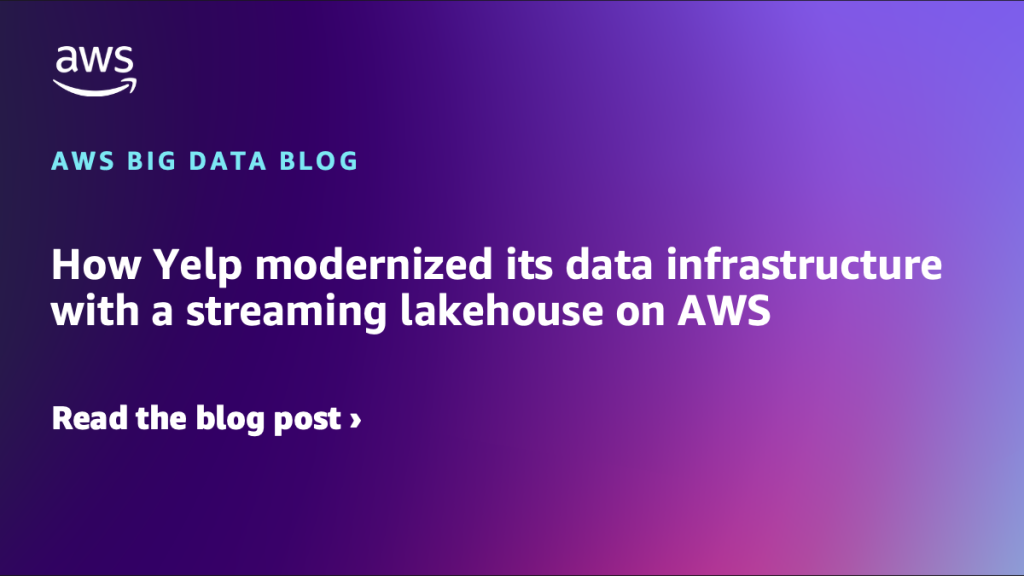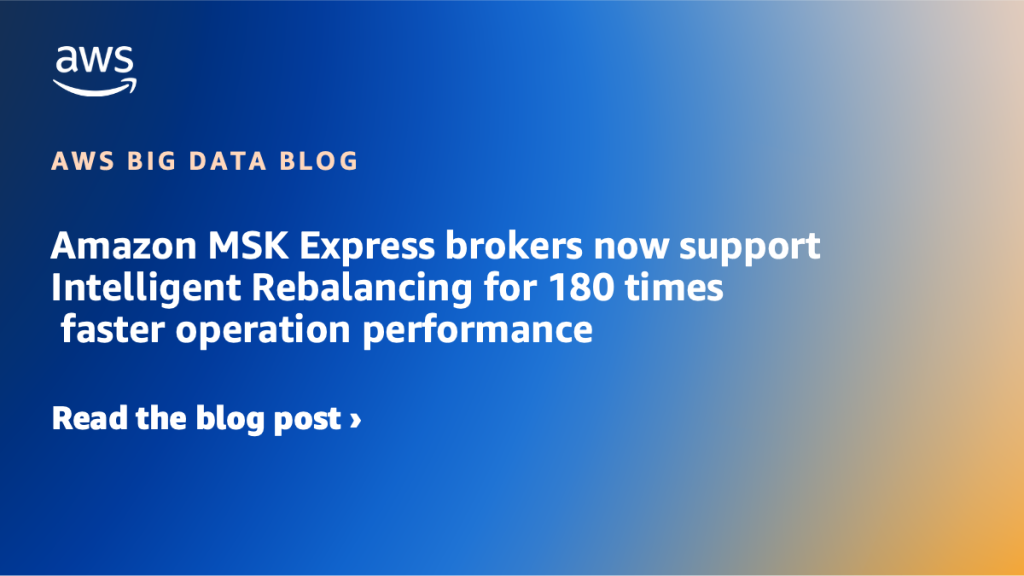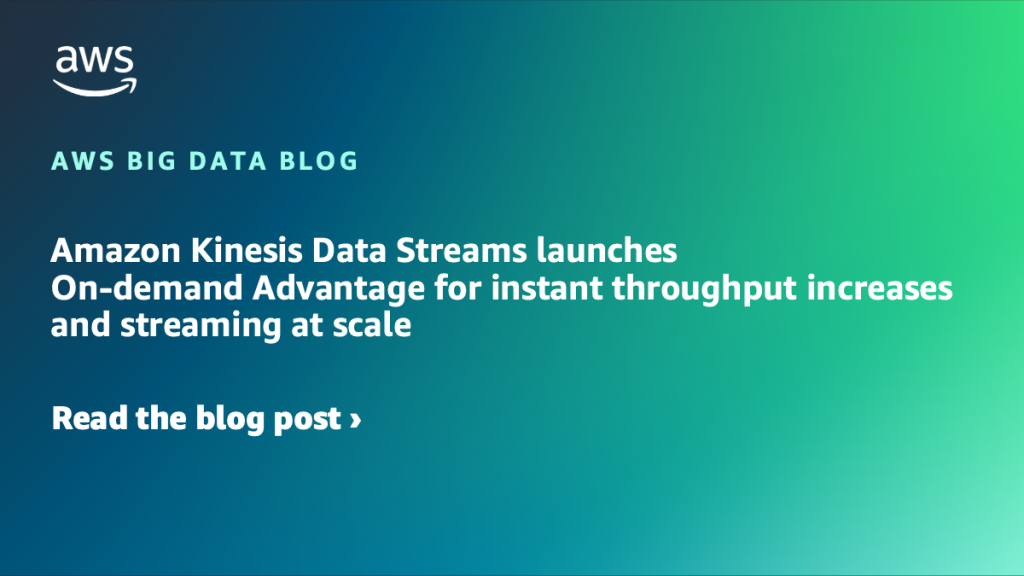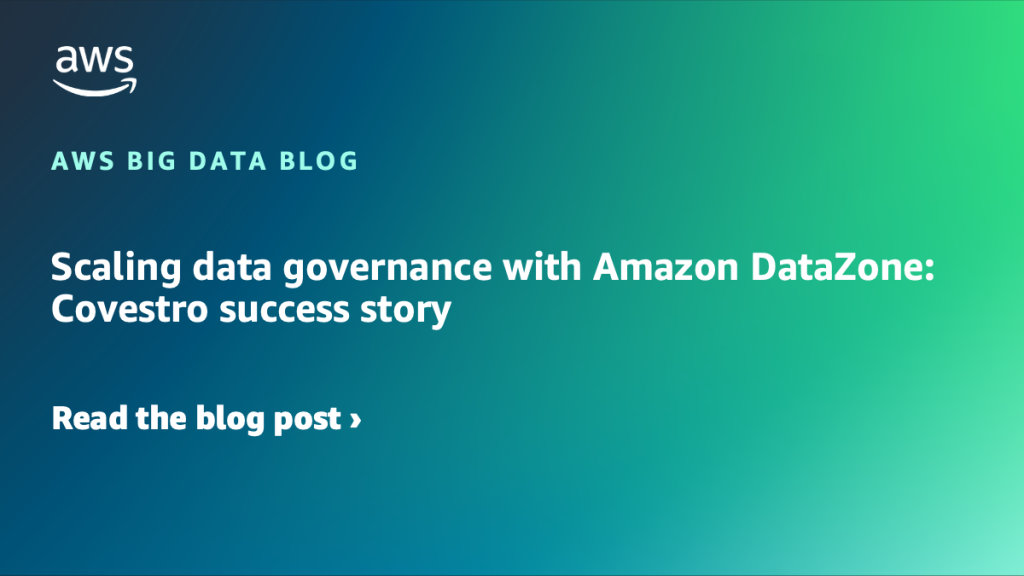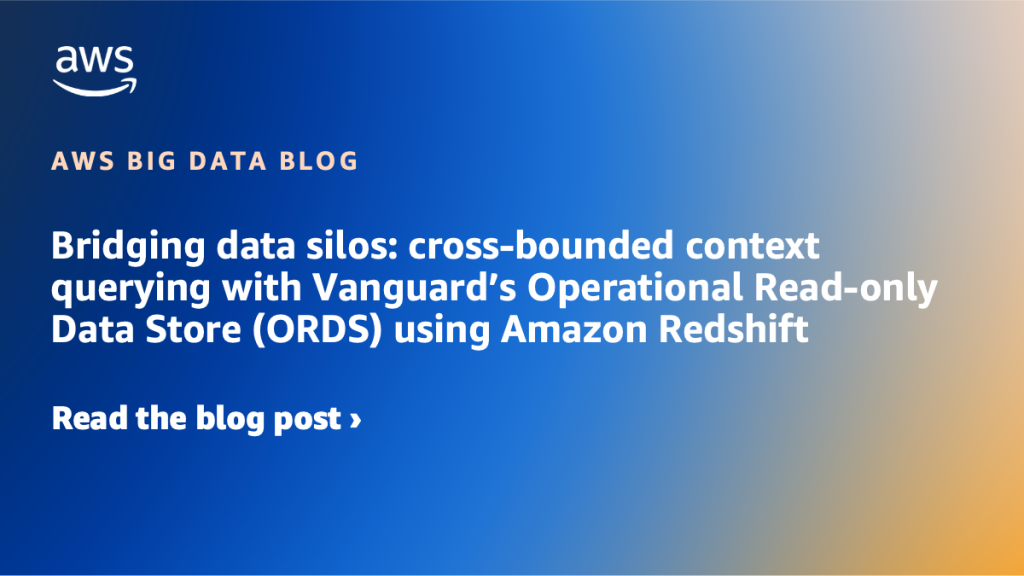AWS Big Data Blog
Category: Intermediate (200)
Enforce business glossary classification rules in Amazon SageMaker Catalog
Amazon SageMaker Catalog now supports metadata enforcement rules for glossary terms classification (tagging) at the asset level. With this capability, administrators can require that assets include specific business terms or classifications. Data producers must apply required glossary terms or classifications before an asset can be published. In this post, we show how to enforce business glossary classification rules in SageMaker Catalog.
Introducing Amazon MWAA Serverless
Today, AWS announced Amazon Managed Workflows for Apache Airflow (MWAA) Serverless. This is a new deployment option for MWAA that eliminates the operational overhead of managing Apache Airflow environments while optimizing costs through serverless scaling. In this post, we demonstrate how to use MWAA Serverless to build and deploy scalable workflow automation solutions.
How Yelp modernized its data infrastructure with a streaming lakehouse on AWS
This is a guest post by Umesh Dangat, Senior Principal Engineer for Distributed Services and Systems at Yelp, and Toby Cole, Principle Engineer for Data Processing at Yelp, in partnership with AWS. Yelp processes massive amounts of user data daily—over 300 million business reviews, 100,000 photo uploads, and countless check-ins. Maintaining sub-minute data freshness with […]
Amazon MSK Express brokers now support Intelligent Rebalancing for 180 times faster operation performance
Effective today, all new Amazon Managed Streaming for Apache Kafka (Amazon MSK) Provisioned clusters with Express brokers will support Intelligent Rebalancing at no additional cost. In this post we’ll introduce the Intelligent Rebalancing feature and show an example of how it works to improve operation performance.
Amazon Kinesis Data Streams launches On-demand Advantage for instant throughput increases and streaming at scale
Today, AWS announced the new Amazon Kinesis Data Streams On-demand Advantage mode, which includes warm throughput capability and an updated pricing structure. With this feature you can enable instant scaling for traffic surges while optimizing costs for consistent streaming workloads. In this post, we explore this new feature, including key use cases, configuration options, pricing considerations, and best practices for optimal performance.
Scaling data governance with Amazon DataZone: Covestro success story
In this post, we show you how Covestro transformed its data architecture by implementing Amazon DataZone and AWS Serverless Data Lake Framework, transitioning from a centralized data lake to a data mesh architecture. The implementation enabled streamlined data access, better data quality, and stronger governance at scale, achieving a 70% reduction in time-to-market for over 1,000 data pipelines.
Amazon Kinesis Data Streams now supports 10x larger record sizes: Simplifying real-time data processing
Today, AWS announced that Amazon Kinesis Data Streams now supports record sizes up to 10MiB – a tenfold increase from the previous limit. In this post, we explore Amazon Kinesis Data Streams large record support, including key use cases, configuration of maximum record sizes, throttling considerations, and best practices for optimal performance.
How Twilio built a multi-engine query platform using Amazon Athena and open-source Presto
At Twilio, we manage a 20 petabyte-scale Amazon S3 data lake that serves the analytics needs of over 1,500 users, processing 2.5 million queries monthly and scanning an average of 85 PB of data. To meet our growing demands for scalability, emerging technology support, and data mesh architecture adoption, we built Odin, a multi-engine query platform that provides an abstraction layer built on top of Presto Gateway. In this post, we discuss how we designed and built Odin, combining Amazon Athena with open-source Presto to create a flexible, scalable data querying solution.
Bridging data silos: cross-bounded context querying with Vanguard’s Operational Read-only Data Store (ORDS) using Amazon Redshift
At Vanguard, we faced significant challenges with our legacy mainframe system that limited our ability to deliver modern, personalized customer experiences. Our centralized database architecture created performance bottlenecks and made it difficult to scale services independently for our millions of personal and institutional investors. In this post, we show you how we modernized our data architecture using Amazon Redshift as our Operational Read-only Data Store (ORDS).
Enhance search with vector embeddings and Amazon OpenSearch Service
This post describes how organizations can enhance their existing search capabilities with vector embeddings using Amazon OpenSearch Service. We discuss why traditional keyword search falls short of modern user expectations, how vector search enables more intelligent and contextual results, and the measurable business impact achieved by organizations like Amazon Prime Video, Juicebox, and Amazon Music.
